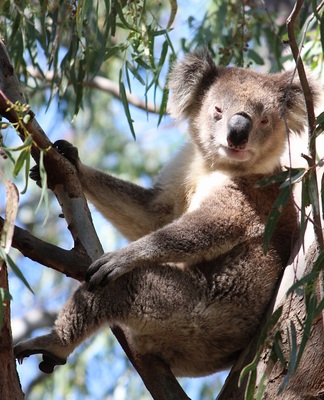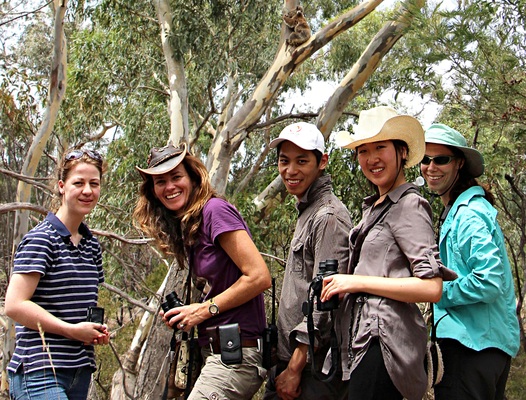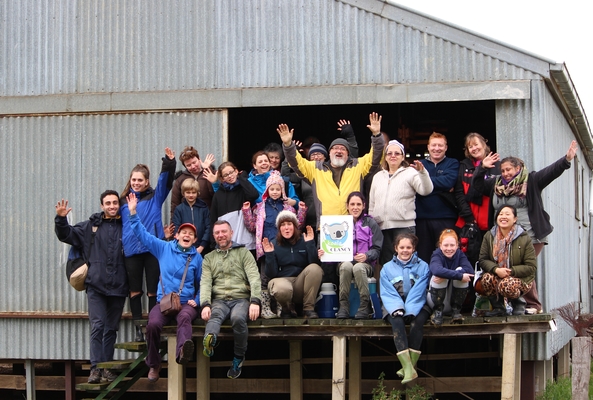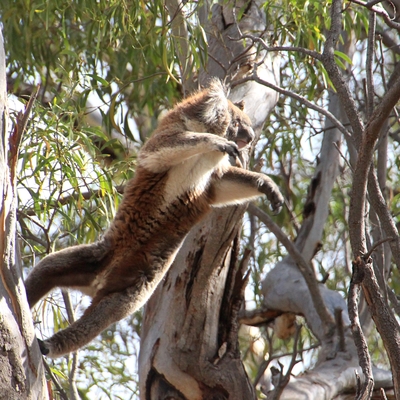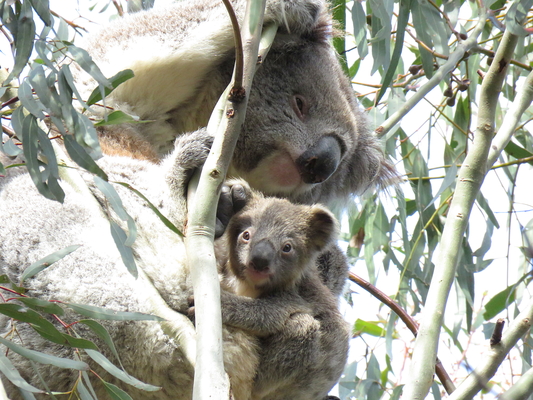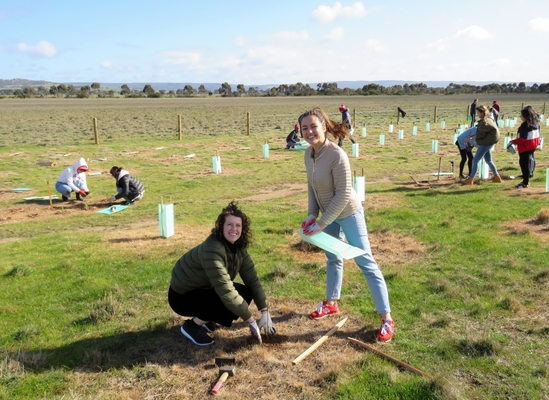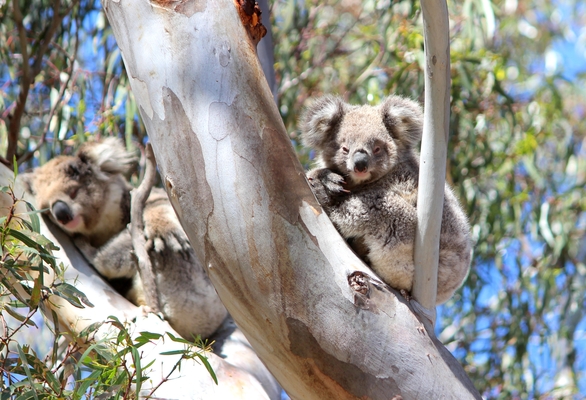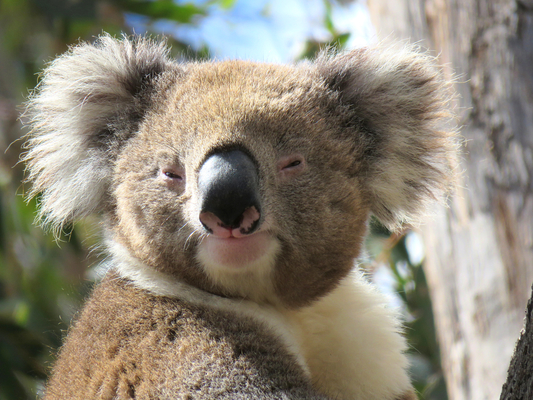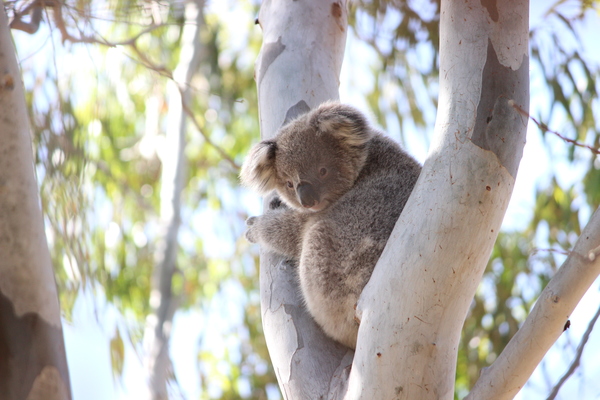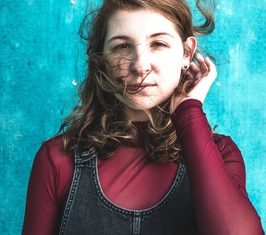The wildest celebrities would be red-faced if caught getting up to the antics of the You Yangs’ Clancy. LUKE VOOGT ventures into the bush to discover the secret life of koalas and the efforts to ensure their survival.
You Yang resident Clancy is Australia’s most famous wild koala and, boy, does he know it, according to ‘publicist’ Janine Duffy.
“He’s one of the cockiest, most arrogant koalas I’ve ever met,” the koala expert tells GC.
The blonde koala is unperturbed by tourists and animal experts that patrol the trees alike, having a scratch, groom or climb no matter who’s watching.
“He’s a bit of a performer,” Janine says.
“I often compare him to Chris Hemsworth – a lot of the American ladies love that.”
Clancy has almost 45,000 Facebook followers, the most of any non-captive koala, and has been proudly showing off new son Bunyip and daughter Lulu online. “His son is a spitting image!” Janine says.
But Clancy is a bit of scoundrel, whose sexcapades rival that of the wildest celebrities, she reveals.
His latest two joeys resulted from mating with a mother koala and her daughter, before taking off on a hiatus, Janine says.
“They’re his second and third that we’re sure of. He takes no responsibility for them, pays no childcare.”
But Janine is sure Clancy will come back, as she has observed him for nine years.
“He’s known us since he was in the pouch of his mother,” she says.
“I think it he’ll be back – he’s done it before where’s he’s gone away for three months.”
Female koalas can travel several kilometres in summer, in search of the male with the deepest voice, Janine explains.
“They’re not lazy in summer,” she says.
“He was the sexiest koala of the year last summer – he was Mr Stud and the women came from everywhere.
“We know far too much about these animals,“ she adds, laughing.
But with long hot summers and drought on the horizon, Clancy and his fellow koalas are under threat.
“Koalas in the You Yangs and Brisbane Ranges need our help,” Janine says.
“It’s getting hotter and drier around Geelong and every summer it gets harder for koalas to survive.
“It really is a serious thing. Our modelling suggests that they will not survive climate change in the You Yangs.”
Koala numbers have declined by 46 per cent in the You Yangs between 2007 and 2017, with a small recovery from 2011 to 2013, Janine says.
“The trend is continuing on that bad track. Our area is predicted to get hotter and direr and it’s been doing so for 20 or 30 years already.”
Gradual land-clearing of red gums in the “best quality growing land” over the past century has forced koalas to migrate further into the You Yangs, Janine explains.
There the “average” land has kept koalas alive but “wasn’t really where they wanted to be”, Janine says.
Hotter, drier summers in future means less healthy vegetation and lower tree survival rates in these poorer growing areas, she says.
Koala populations in western NSW are suffering similar decline, Janine says.
“There’s no lack of scientific literature and we have some top scientists working on these animals.”
Trees under already “terrible” water stress cannot sustain the “thirsty” local koala population in future, Janine says.
Koalas can die in temperatures higher than 37 degrees celsius if they cannot find adequate shade, she adds.
“We lost at least two to heat this January.“
But Koala Clancy Foundation is helping to ensure the outrageous antics of their namesake critter can continue well into the future.
Together with farmers, Landcare and volunteers, the foundation has planted about 5000 red gums over eight years on the edge of farms or local rivers.
“We’ll get another 3000 in this year,” Janine says.
“We’ve been getting quicker and more professional. We’ve also got more farmer support – they’re getting to know us and they like what we do.
“Little River has wet soil and every tree we plant along the river is doing extremely well.
“We had 80 to 90 per cent success, even during last summer, which was awful (hot and dry).”
Recently the group held a planting session in Bannockburn and Janine welcomes anyone to plant trees in the You Yangs and Brisbane Ranges on 21 July and 18 August.
“What we need is many hands to plant, and local hands are the best,“ she says.
“It only takes five years for a river red gum tree to grow big enough to feed a koala.
“In the time it takes a kid to go through high school, we’ll have a healthy koala forest – if we plant it now.”
The foundation digs the holes and supplies the equipment, meaning at most two hours of tree planting.
The cost of the day, $30 for adults and $20 for children, includes nature walks with koala experts and goes towards the foundation’s work.
With koalas being so beloved by Australians and tourists alike, Janine is confident local people will pitch in to protect the species for future generations.
Koalas’ tendency to make eye contact and their similar proportions to a baby human are the secrets to the cute creature’s popularity, Janine explains.
“When someone actually meets a wild koala and the koala turns and looks them in the eye it’s one of the most stunning moments,” she says.
“I’ve been to Africa multiple times, I’ve been walking with the gorillas and chimps and things. It’s very rare to make eye contact with wild animals but koalas do it all the time.”
After 21 years as a koala researcher Janine has never lost her “enchantment” with the furry marsupials.
“It’s like being a family friend, you’re somebody they’ve known for their whole life,” she says.
“I feel very protective of them and very privileged to understand so much of their life.”
For more information on helping local koalas visit: koalaclancyfoundation.org.au/you-can-help/koala-conservation-day


